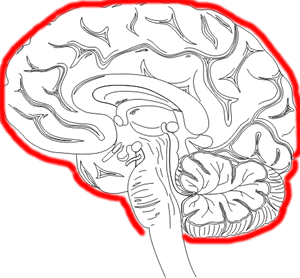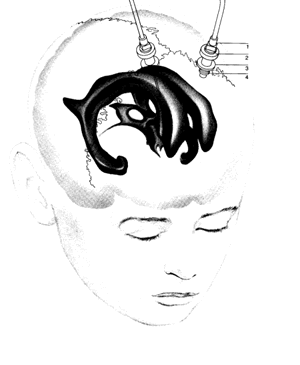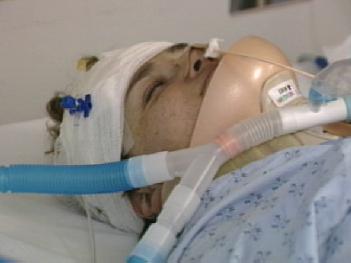|
INTRACRANIAL PRESSURE; ICP Injury to the brain causes the brain tissue to swell. The brain is encased within a closed, hard skull . There is very little room for the brain tissue to swell without it causing more brain damage (Image 2). Swelling in the brain is called Cerebral Edema. If the brain becomes swollen, the pressure inside the skull will increasel. This pressure is called the Intracranial Pressure. Intracranial means "inside the cranium or skull". The term ICP means Intracranial Pressure. Many different types of brain injuries can lead to brain swelling. Cerebral edema is very hard to stop. Certain types of brain injury may be helped by putting a catheter into the brain to measure the pressure or to remove excess fluid. The brain has cavities or spaces inside the brain tissue called "ventricles". The ventricles are filled with a protective fluid called Cerebral Spinal Fluid, or CSF. This fluid is constantly produced within the ventricles, however, we make more fluid every hour than we actually have space. Consequently, the CSF must constantly flow out of the ventricles, down the spinal column and upward around the top of the brain. As the CSF flows, it is reabsorbed into the blood stream through the cerebral veins. The veins eventually drain into the right side of the heart (through the jugular veins of the neck) where the CSF is recirculated. If the brain becomes swollen, the flow of CSF can be blocked. This can lead to an accumulation of CSF in the ventricles called Hydrocephalus. Hydro means "water", and cephalus is "on the brain". Hydrocephalus is easy to identify by CT scan. It is identified by large, swollen ventricular cavities. If the ventricles are very large, they may even cause the brain to be pushed to the other side. This is called "a shift". It indicates very serious swelling in the brain. Hydrocephalus can also develop if there is bleeding in the spaces around the brain where the cerebral veins are located. This space is called the subarachnoid space. Blood can interfere with the ability to reabsorb CSF, causing the CSF to build up in the ventricles (hydrocephalus). Following trauma, patients may have swelling and bleeding that can lead to hydrocephalus. Birth defects (congenital abnormalities) of the ventricle system can also cause hydrocephalus. Hydrocephalus can be treated by putting a catheter into the ventricle (called an Intraventricular Catheter) [Image 3]. Excess fluid can be drained and the pressure can be monitored. Removal of fluid may help to reduce the ICP and "make room" for the brain to swell. Intraventricular catheters can be put in at the bedside during an emergency. A small piece of bone the size of a quarter is removed from the skull (called a "burr" hole). This allows the neurosurgeon to insert a catheter through the brain tissue and into the ventricle. The intraventricular drain can be connected to a pressure monitoring device. This allows us to monitor the pressure inside the brain and to identify whether the patient is responding to treatment. We can also drain some of the fluid from the ventricles to help lower the pressure. |
Image 1: The skull creates a hard, round shell that encases the brain. It can be both our protector and our nemesis when brain injury occurs. |
|
Image 2: The red line represents the closed-box and limited ability for the brain to swell. |
|
|
Image 3: Intraventricular drainage catheter. |
|
|
Image 4: Patient with ICP drainage catheter. |
Image 5: ICP drainage collection unit. |
|
|
Our masking guidelines have been updated. Visit the Patient and Visitor Masking Guidelines page for more information.







